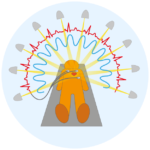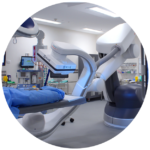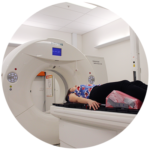Research
Explore the projects in our three research themes below.
Novel Radiation Therapy Systems and Applications
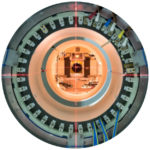 The Australian MRI Linac Program
The Australian MRI Linac Program
The Australian MRI-linac program is a Magnetic Resonance Imaging (MRI) device combined with a Linear Accelerator, which is used to treat cancer using radiotherapy.
Nano-X Radiation Therapy System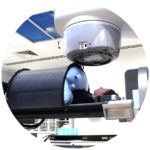
Nano-X is a new class of radiotherapy system that will deliver significant cost reductions, by introducing state-of-the-art clinical radiotherapy precision with a machine that has a significantly smaller footprint, much-reduced shielding requirements and lower staff-to-patient ratios.
Medical Imaging
CT Ventilation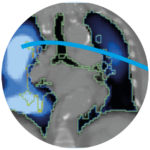
A novel software-based solution that can map out the healthy areas of the lung simultaneously while routine pre-treatment scans are carried out.
The SPARE Challenge
The SPARE challenge stands for Sparse-view Reconstruction Challenge for Four-dimensional Cone-beam CT (4D CBCT). The aim is to systematically investigate the efficacy of various algorithms for 4D CBCT reconstruction from a one minute scan.
The Patient Connected Imaging Program
The Patient Connected Imaging Program is a suite of projects which use the patient’s respiratory or cardiac signals to improve the images we can achieve across different imaging techniques.
ACROBEAT
Acquiring images only when the heart and lungs are in perfect position can result in clearer images, and no unnecessary radiation dose to the patient.
Interventional Imaging
Robotic imaging and 3D-printed solutions to aid in the diagnosis and treatment of diseases.
REACT
Clearer lung cancer images, on standard CT Imagers.
Cancer Targeting
AV Biofeedback
AV biofeedback uses respiratory signals to guide radiation therapy, and to guide the patient in breathing steadily for improved treatment accuracy.
Markerless Tracking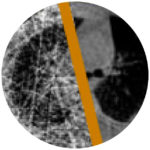
In a world first, we’re developing software that tracks lung cancer tumours without any need for implanted markers.
Remove the Mask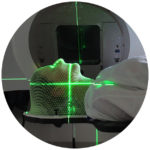
Reducing anxiety and distress for head and neck cancer patients. We’re developing surface monitoring technology that can detect & guide patient motion, which will allow us to “remove the mask” from head & neck cancer radiotherapy treatment.
Beam Adaptation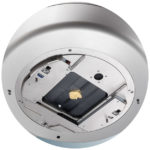
Beam Adaptation dynamically shapes the radiation to target the tumour as it moves, to ensure the radiation beam always hits the tumour and spares the surrounding healthy tissue.
Kilovoltage Intrafraction Monitoring (KIM)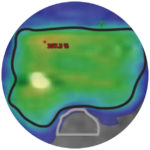
Real-time cancer targeting on a standard linear accelerator.
Quality Assurance
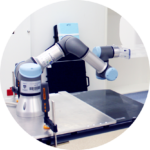 Robotic QA Phantom
Robotic QA Phantom
Accurately mimicing tumour motion, ensuring safe implementation of radiotherapy technologies in the clinic.


